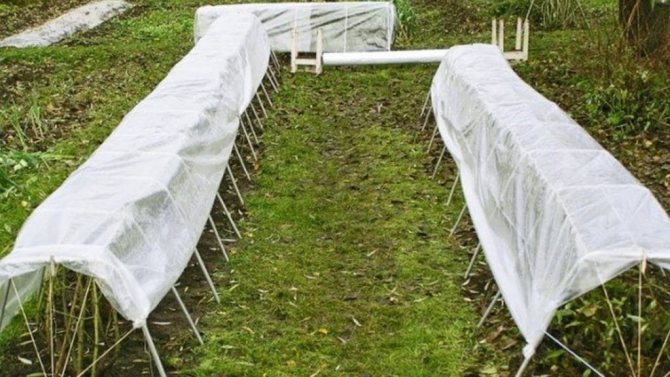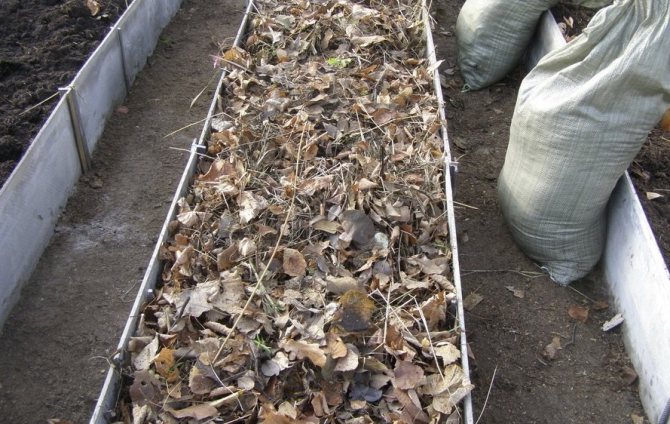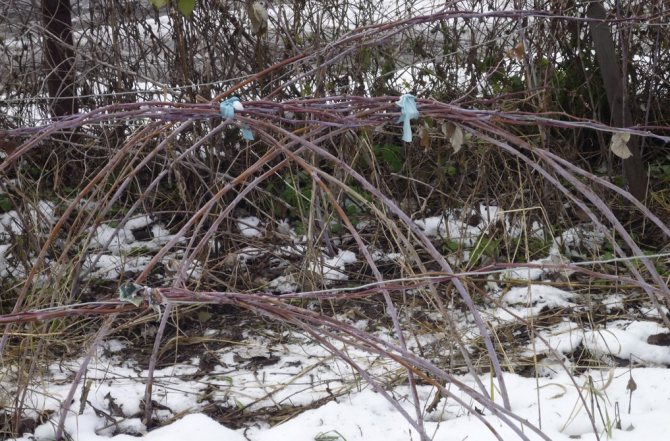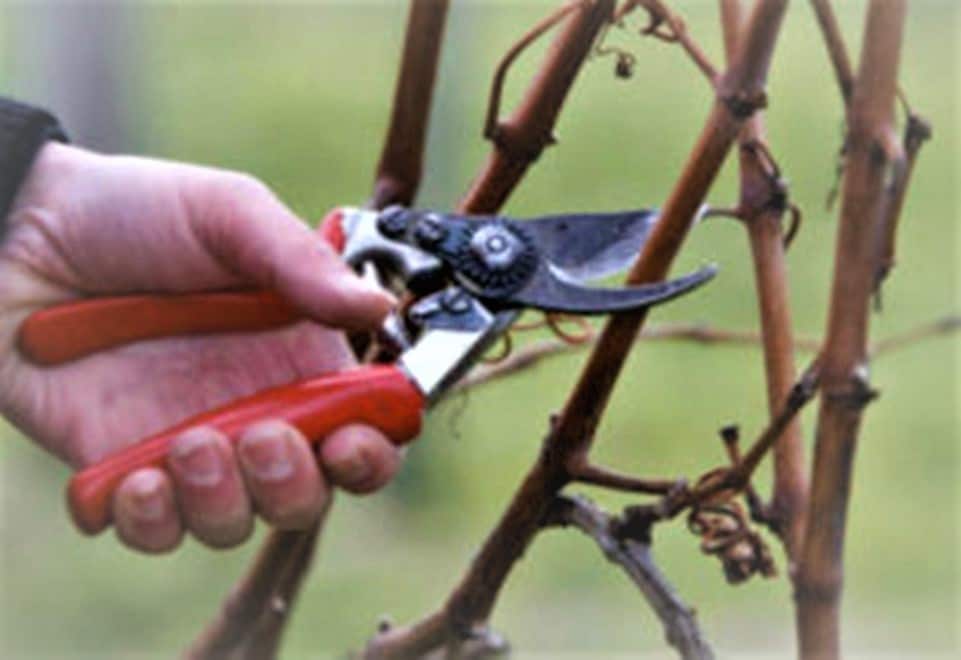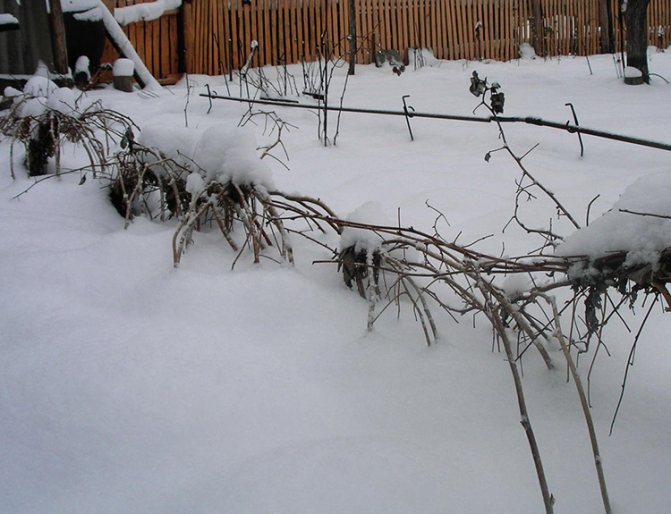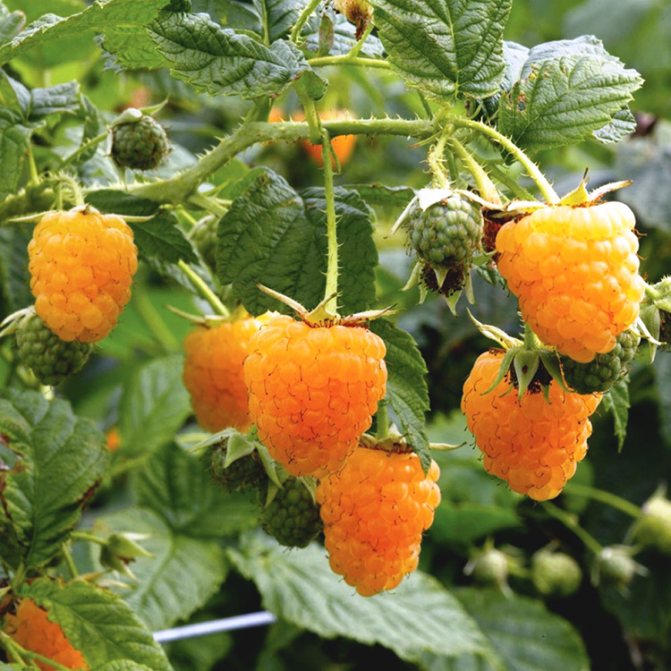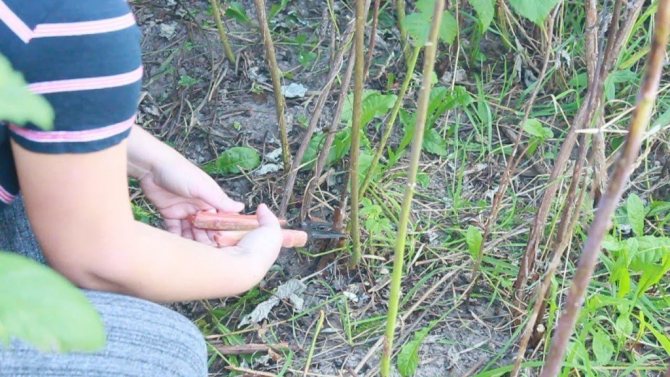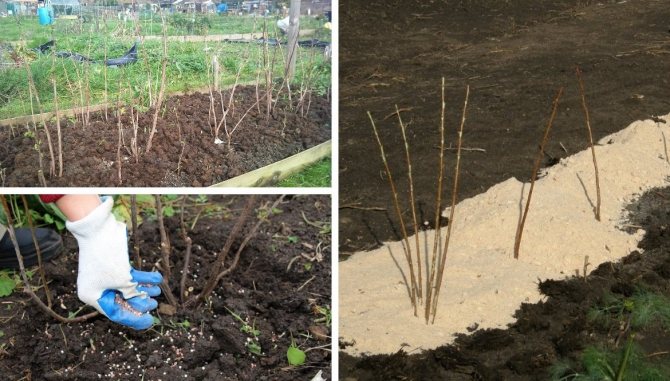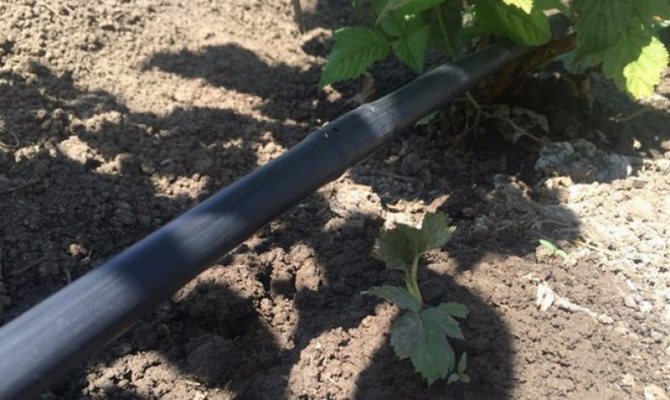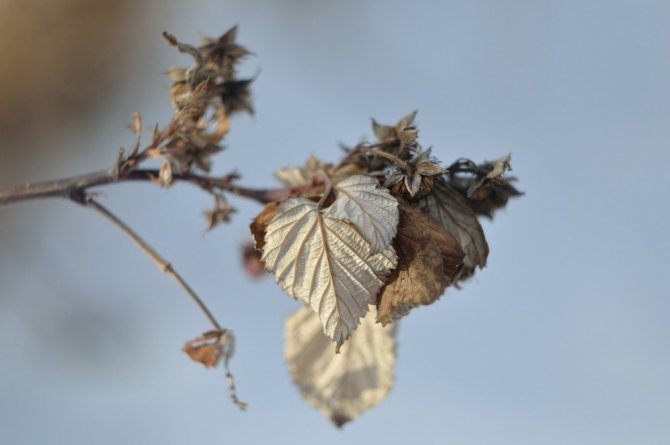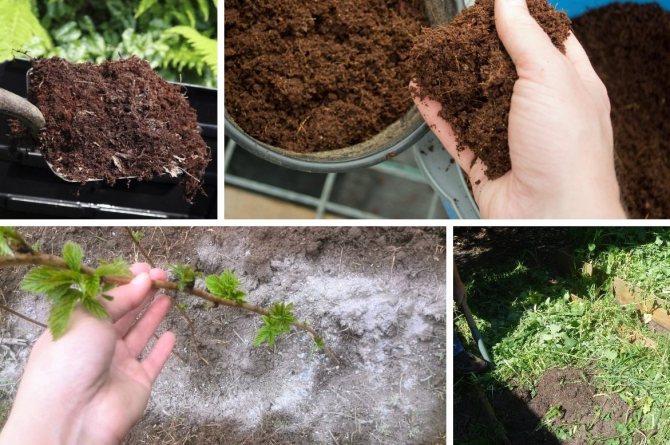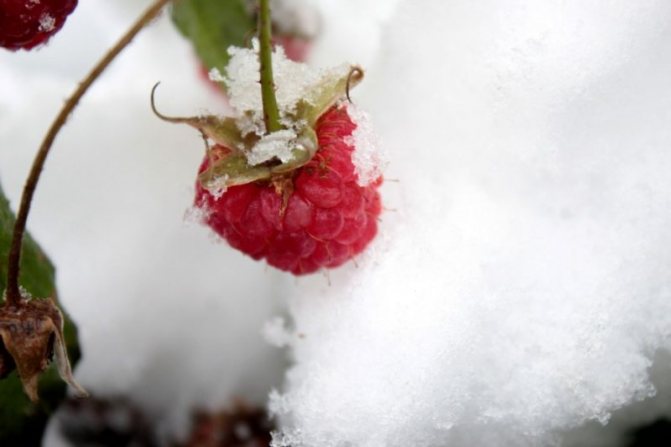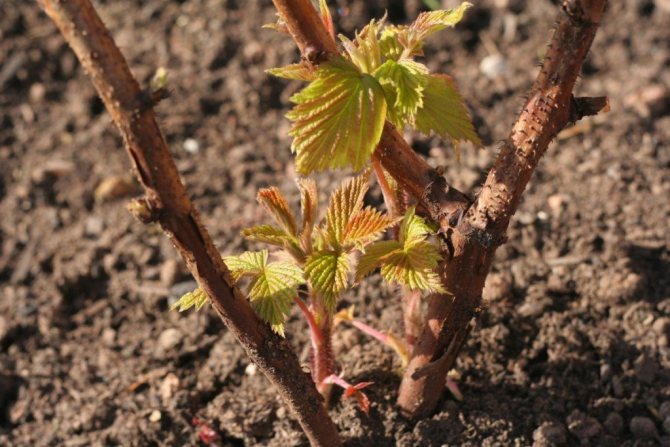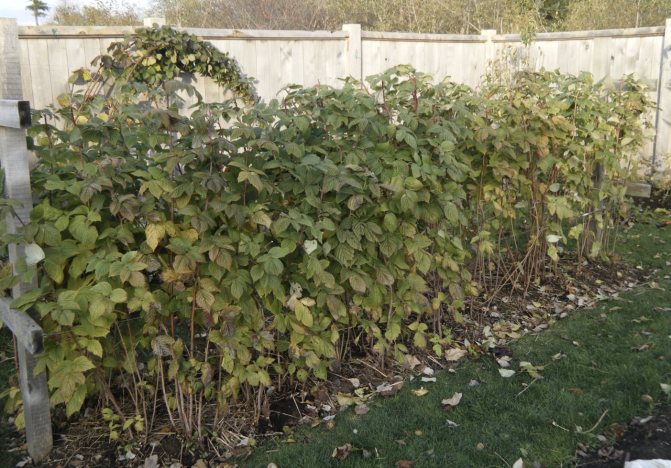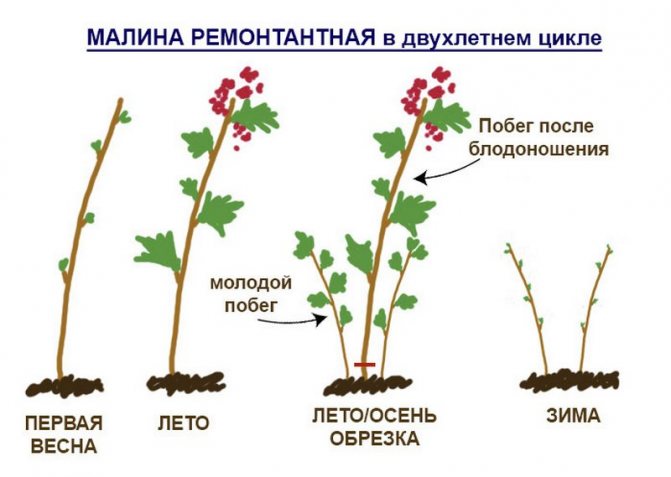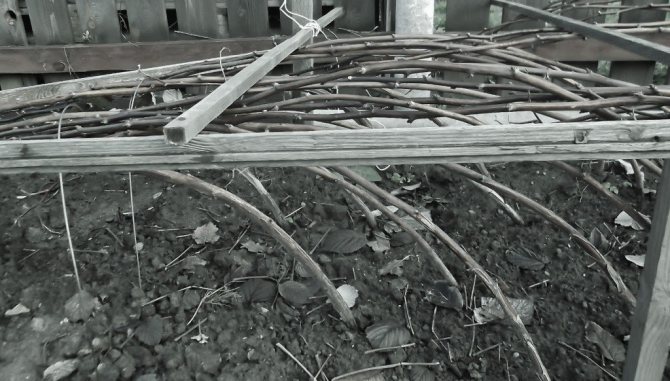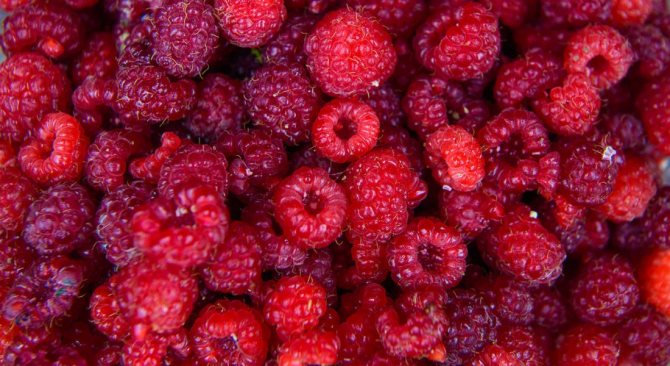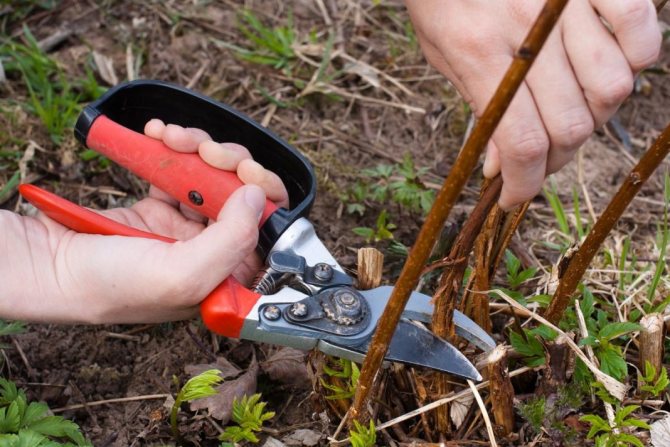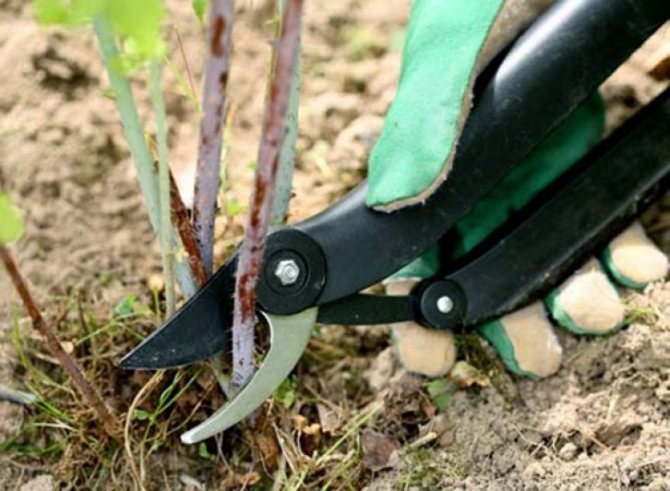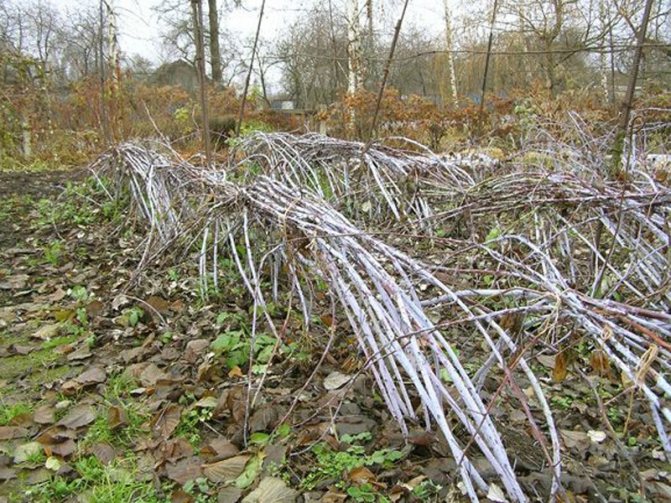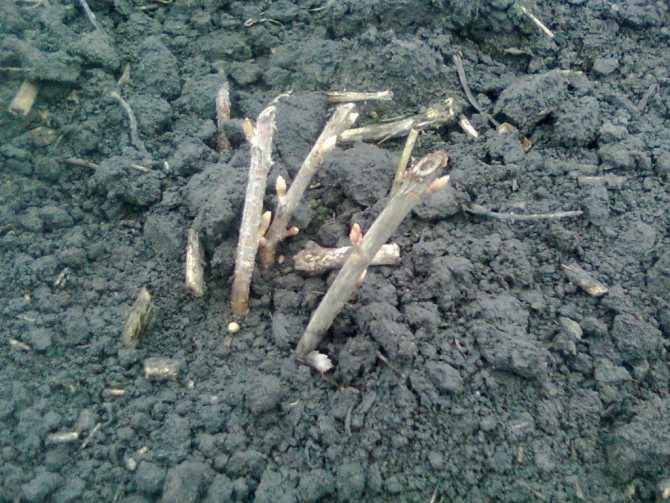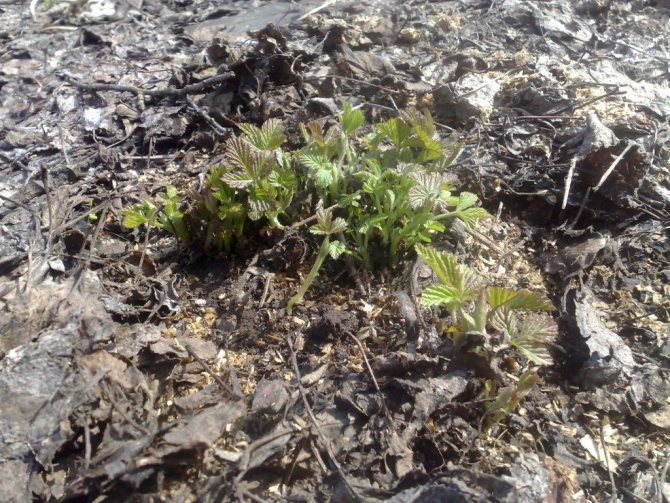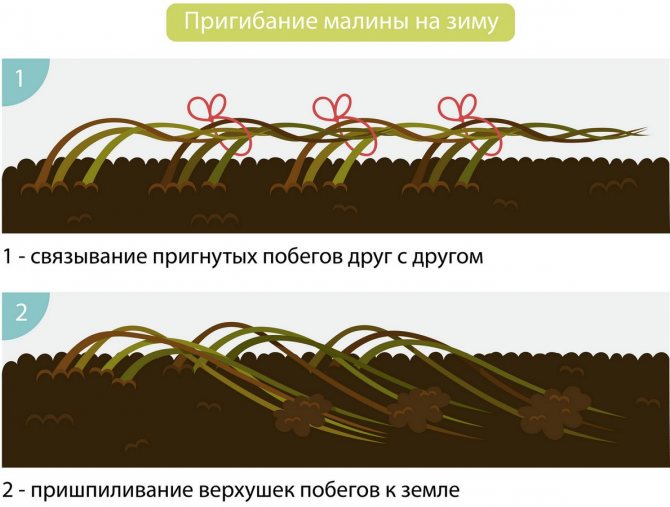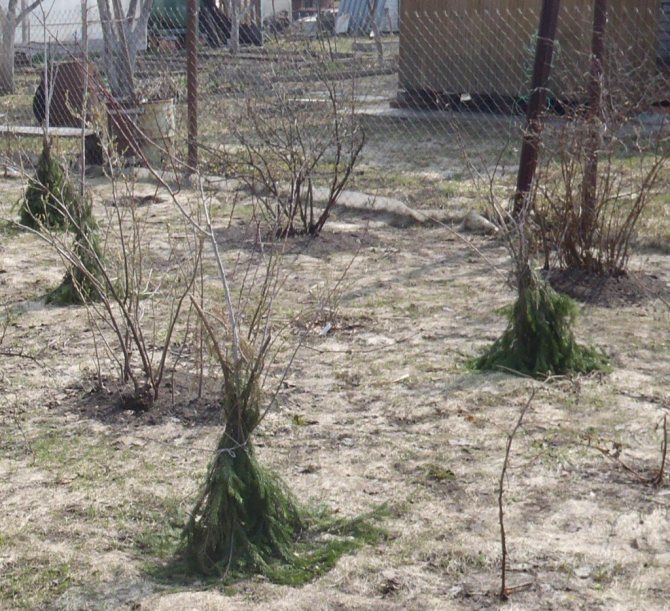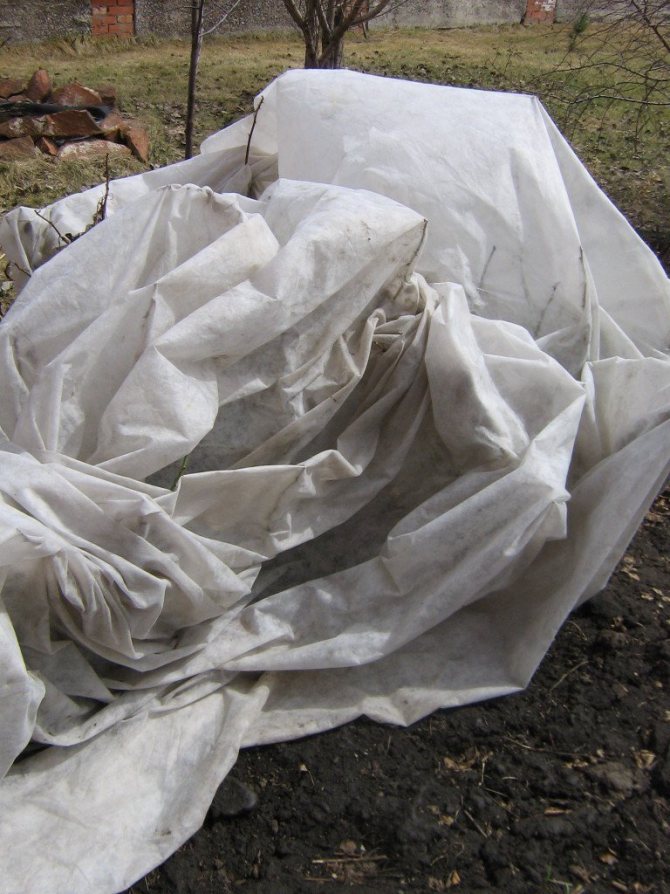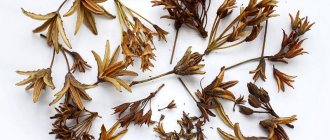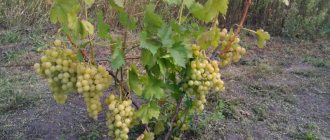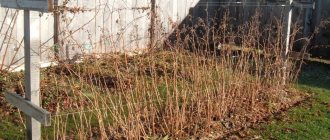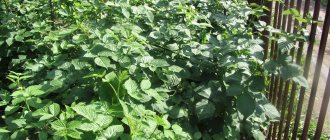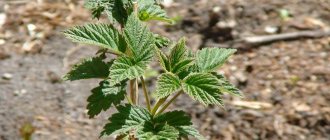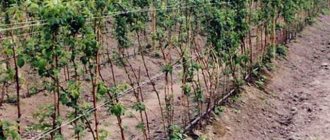Autumn shrub preparation
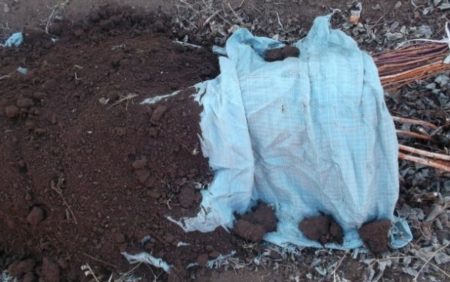
Experienced gardeners begin the first stage of work on preparing for winter in the summer. Since mid-August, mineral fertilizers have been actively applied, which contribute to the maturation of the woody part. For this, top dressing with a high amount of potassium and phosphorus is used and the nitrogen component is completely excluded. In addition to increasing yields, they are also needed to prepare the plant's root system for winter. The last time fertilization is applied at the beginning of October before the onset of severe frosts.
Mulching
To preserve the root system of the plant, it is necessary to mulch the soil. This increases the moisture content of the soil and promotes good growth. In the role of mulch, organic matter is used, which has a neutral-acidic environment. Straw, peat, or overripe foliage are good choices. There is no need to use compost for this purpose. It contains more nitrogen. In addition, during a warm winter, compost will cause the lower part of the shoots to heat up.
Mulch is laid in a layer of 5-10 cm. A smaller amount will not reliably cover the root system, and a too thick layer will cause the branches to heat up. During a thaw, due to a too thick layer of mulch, fungal diseases on the shoots or a purulent process often develop. Before laying the mulch, the soil is watered abundantly so that the wintering of raspberries does not occur with dry roots.
Important!
Mulch application is especially recommended in areas where severe frosts often occur before the final snow falls.
Tying and additional cover
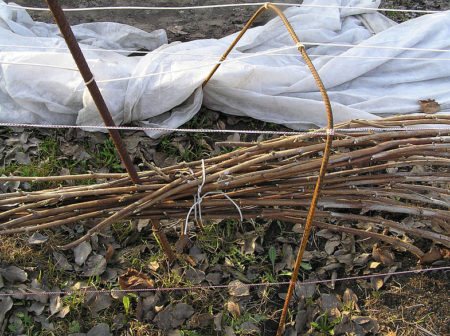

After the shrub has shed its leaves, the raspberry shoots are bent to the soil. To do this, pegs made of wood or metal rods are dug into the soil and a wire is pulled. It should be located at a distance of no more than 20 cm from the ground level. With the first snowfalls, shoots located close to the soil go under the snow, not freezing. The lashes are tied in an arc-like manner with threads or ribbons of durable nylon.
How to tie a remontant variety in spring with a photo
Tying such raspberries has a number of features:
- Bred 200 years ago, the remontant raspberry usually grows in a large and strong bush. It is resistant to wind, rain and bad weather. It would seem that such a raspberry does not need support. However, growing on trellises significantly stimulates its growth and ripening, significantly increasing the yield.
- All branches are evenly lit, well ventilated and do not fall on the ground under the weight of ripe berries. For the garter, a two-row trellis with a height of 2 m is used. This structure can be made with your own hands. Pillars are installed along each crimson row at intervals of 3 meters.
- A wire is stretched along them in 2 rows: at a height of 60 cm and 130 cm.As the shoots grow, a garter is carried out. Growing a double harvest, all branches are divided into 2-year-olds, which bear fruit in summer, and young ones, which gradually grow back. They will bring the harvest in the fall.
- Single bushes are attached to pegs or form them in the form of a fan. Using for this a garter to the support, which is installed between the rows of the raspberry tree. Part of the shoots is fixed on one raspberry bush, and then on another.
By regularly tying up their raspberry bushes, every gardener will ensure himself a high yield, good crop growth and fast fruiting. At the same time, one should not forget about observing the timing of the garter and using all the methods listed in our article. And then raspberries will delight you with fragrant, juicy berries, high yield and good quality!
Watering in autumn


All raspberries are abundantly moisturized in the fall. Watering is carried out regularly from the first days of September. The last time the moistening is carried out half a month before the expected date of frost. Watering raspberries often is especially important if there is little rainfall in the fall.
According to experienced gardeners, the last time you need to water raspberries is after the formation of an ice crust on the soil. Each plant requires 3 liters of water. This is enough to provide moisture to the root system and protect it from drying out during the winter months.
Cropping and how to do it
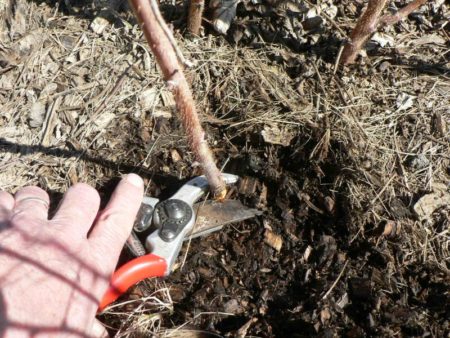

Experts differ on the timing of pruning the raspberry tree. Some gardeners believe that raspberries are pruned before the onset of cold weather, since then the sap flow is already completed and the plant easily tolerates the procedure. According to others, it is necessary to cut off the extra branches after the end of fruiting. They motivate this by the fact that in this way the plant retains the strength to prepare the root system for winter.
But most experienced summer residents adhere to an intermediate point of view and suggest thinning raspberries in early September. During this period, the plant still retains a sufficient amount of juice, but its movement is already slowing down. When pruning raspberries, first of all, old shoots that no longer bear fruit are removed. Completely diseased and damaged branches are cut out.
Important!
If the raspberry tree grows too densely, then completely healthy strong branches will have to be removed during pruning. It is enough to leave no more than 10 shoots on each bush.
To prevent the spread of raspberries throughout the entire territory of the site, the root system is also cut off. To do this, a bayonet shovel is stuck into the ground around each bush, stepping back 30 cm.With its help, the ends of the roots are cut off.
To improve the quality of the crop, double pruning is used. In this case, in addition to the usual cutting out of unnecessary shoots, the young branches are pinched from above. This stimulates the development of a daughter young kidney group. With the onset of spring, the shoots are shortened again and cut to the first fully developed bud. In order to prevent thickening of the planting, a free space of 30 cm is left between individual shoots.
The need for a garter
Some varieties of raspberries can do without a garter. Most of the high-yielding varieties bear fruit much better and are less susceptible to diseases only thanks to the tied bushes.
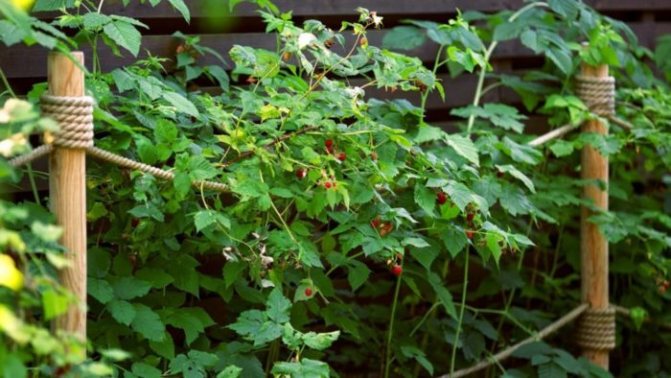

Why is a garter made in the practice of cultivating raspberries:
- After her, young shoots are located inside the bush. This greatly facilitates their unhindered growth and development.
- Each flower is much more efficiently pollinated by wind and bees.
- This is an effective protection of two-meter bushes from damage and deformation.
- Time for harvesting is significantly saved. Since it is more convenient to remove berries from tied branches, and injuries from thorns are minimal.
- The volume of fruits after the garter increases significantly, since the shoots receive more sunlight and are more evenly illuminated. Berries form earlier and ripen faster.
- Bushes are less susceptible to attack by pests and diseases.
- Raspberries are protected from strong winds, rain, snow, which can break the bushes.
Environmental conditions affecting the fragility and flexibility of raspberry shoots, and contributing to their injury and damage:
- significantly overestimated height of raspberry bushes;
- unexpectedly bountiful harvest of berries;
- heavy rains over a long period;
- strong gusts of wind.
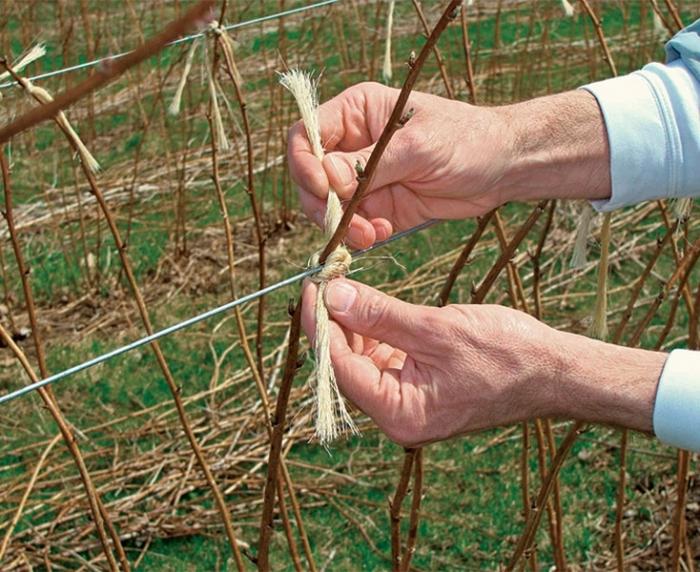

Interesting! No one can predict exactly what climatic conditions await us this summer. It is impossible to determine in advance how strong the wind and the amount of precipitation will be. To insure your future raspberry crop, it is best to tie up the bushes according to the recommendations of leading agronomists.
Top dressing
After finishing the work on pruning raspberries, all the resulting debris is removed from the site and burned. Fallen leaves, along with old mulch, are also collected and destroyed in order to protect plants from harmful insects that are going to winter there. For successful wintering, weak plants are fertilized. Nutrients increase the likelihood of successfully surviving frost.
In the fall, organic and mineral dressings are introduced, alternating them according to the seasons. In autumn, nitrogen-containing substances are not used in order not to provoke the growth of green mass. This is dangerous for the plant, since young shoots do not have time to woody in the cold and will die from frost in winter.
Important!
Fertilizers with a high amount of phosphorus and potassium are suitable for feeding.
Any of the following fertilizers can be used:
- potassium-phosphorus in the amount of 30 g for each plant;
- superphosphate in the amount of 60 g for each bush;
- potassium sulfate is added at 40 g per copy;
- potassium monophosphate 35 g per plant.
Mineral fertilizers are best laid out in grooves dug at a distance of 30 cm from the bush in a circular manner. Then they are sprinkled with soil and well watered. To prepare raspberries for winter, you can use rotted manure at 4 kg per square meter with obligatory digging.
Technology and timing of bending raspberries
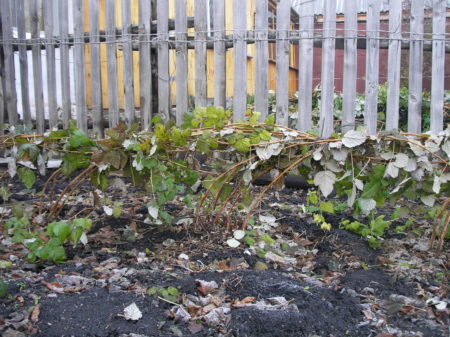

Many inexperienced gardeners bend down raspberries after the onset of frost and therefore make a mistake. Then the shoots often break, the structure of the internal vessels is disrupted, which leads to the death of the whip with the onset of spring due to insufficient intake of nutrients along the entire length.
Important!
Therefore, it is correct to bend raspberries to the ground in September, when the shoots are still flexible enough. But the root system of the plant by this time should already be well developed.
You should not tie all the stems of one bush together in a bunch, since this method does not save the stems from the cold if they are above the surface of the snow cover. Before that, you need to clear the stems from the leaves, smoothly running your hand in a stiff glove from the bottom of the stem to the top. This simple procedure preserves the integrity of the buds and increases the yields of raspberries for the next year.
After removing the foliage, bending is performed. A 1 kg stone should be tied onto a bunch of branches and laid on the ground. Repaired varieties growing on a support are simply attached to the crossbar located below so that the height of the resulting bundle does not exceed 25 cm. Thus, the separated raspberry stems will not rise above the border of the snow cover and will not freeze. Additionally, you can cover the curved raspberry with spandex. It will allow the plant to breathe and save it from the cold if there is not enough snow.
Easy and quick ways for beginners
High productivity of a raspberry bush is observed only when it is tied up correctly and in a timely manner. After all, the skill of a gardener is not only about acquiring a high-yielding variety. Without observing the technological processes of cultivation, the bushes, no matter how productive they were before, will quickly wither away, the berries are crushed, and the yield will significantly decrease.
There are 3 methods of tying raspberry bushes that have been known for many decades. All of them have proven their viability by increasing the yield of this berry crop. You can choose any of the presented methods, it is only necessary to observe safety, avoiding damage to the raspberry branches.
- beam or stab method;
- tapestry method;
- fan garter.
From time immemorial, all gardeners who successfully grow raspberries have used these methods.The method is chosen based on the availability of materials and a creative approach to the shrub. An equally important role is played by external climatic and weather factors prevailing in a given area. All these methods have proved to be quite effective in practice. Combinations of all three methods are often used.
Fan tying
A fairly simple and extremely effective method. Between the raspberry bushes, wooden slats or stakes 2 m long are vertically hammered into the ground. The bushes are divided into two parts, one half is tied to the left column, and the second to the right.
When the entire technological process is completed, the raspberry tree becomes like a large fan. Among all the methods, this is considered by gardeners to be the most difficult and at the same time the most effective. Since the raspberry bushes are evenly illuminated by the sun's rays, this is a great advantage.
Trellis garter
Tying raspberries to trellises has established itself worldwide as the most versatile method of care. It is used by agronomists all over the world, using a variety of tools and materials.
In turn, several variations of this method are practiced.
Double garter or pistol
Take a pair of wooden slats 2 m long. Drive them into the ground at intervals of 4 m. Using a soft wire, stretch two parallel stretch lines between them - at the bottom 1 m, and at the top 1.5 m from the ground. Tie up the crimson branches at two points evenly between the posts, spread apart. Then fasten it from each other at a distance of 0.5 m.
- there will be much more young shoots, this will increase the yield;
- each branch will receive enough sunlight.
- more difficult to harvest;
- it is necessary to use gloves;
- breaking off branches is not excluded.
Structurally, it is very similar to a pistol, but differs in the height of the garter. The upper stretch instead of 1.5 m is located at a distance of 2 m from the ground. Below - at a height of 1 m from the ground. Crimson branches are wound on a stretched wire with the English letter V.
- the sprouts receive excellent ventilation;
- when harvesting, the fruits are easily accessible;
- ease of examination for the detection of diseases and damage to germs.
- Damage and defects of branches are possible.
Single method for small gardens
Take 2 posts with supports, 2 m each. Place them at intervals of 3-4 m along the edges of the plantation. Bury to a depth of 0.5 m. Install the rest of the posts in the same way. Tighten 2-3 rows of plastic or steel wire on them. The structure must be horizontal.
Tie the shoots on which there is an ovary separately. The edges of the branches should not be more than 20 cm higher than the level of the upper wire. If they are higher, then they must be tied up lower.
Advantages: excellent protection against wind gusts.
Minus: young shoots with this method often break. To prevent this, you need to tie the branches at the bottom to a plastic wire.
This method allows you to change the coordination of branches at different stages of their growing season from vertical to horizontal and vice versa. Additionally, the slope of the cross bars is changed by 120 °. Shoots are attached to supports.
- with the onset of the winter period, you can not remove the branches from the trellises, tying them up again in the spring;
- since the berries only remain on one side of the trellis when leaning to the west, harvesting is greatly facilitated.
Disadvantage: the complexity of the hinged design of the trellis.
Beam or stab method
- extreme ease of processing;
- availability for understanding even for a novice gardener;
- no unnecessary work;
- cost-effectiveness of the method;
- the process does not take long.
- slow development of the ovary inside a tied raspberry bush;
- under adverse weather conditions, shoots can break off;
- inadequate ventilation leads to pest attacks, the occurrence of fungal diseases;
- uneven distribution of light flux between the shoots.
Shelter timing in autumn and opening in spring
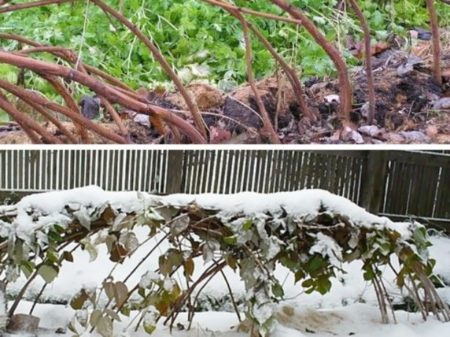

The ideal time to cover raspberries for the winter is after the leaves fall and before the first snow. Then the branches still bend well, and the rhizome is already sufficiently developed.
With the onset of spring, it is important to open the raspberries in time and tie them to the support. Opening too early leads to severe burns to the wood due to significant temperature changes. In addition, strong winds often blow in March, harming the condition of the wood.
Raspberries should be opened gradually. After the snow melts, the covering layer is removed. This is necessary to ventilate the lower part of the branches and the mulching layer, in order to prevent them from becoming rotten. Then the shoots are lifted and tied to a support. This procedure is done until mid-April.
Fertilizer for the winter - is it necessary?
Many gardeners, sooner or later, stop at a choice - to fertilize raspberries for the winter or not. Some believe that an excessive amount of nutrients will lead to the circulation of sap and the bushes may freeze, others are sure that it is necessary to develop the root system as much as possible, despite the statements of the former. The correct answer is necessary, but only correctly and in a timely manner.
The first step is to learn one lesson - never apply a lot of nitrogen fertilizer after August. This can lead to excessive circulation of the sap in the stem, it will not “calm down” enough for the winter and can freeze even in -5 degrees of frost. It is necessary to euthanize the plant as much as possible so that it can withstand extremely low temperatures. "But what about fertilization in the spring, because the bush needs to start quickly?" -you ask. This is very easy to solve. It is enough to add a little manure and other organic fertilizers before the onset of frost - the process of their decomposition is long, at least 4-5 months. Just at the moment when the plant begins to revive, it will receive many useful substances. This completes the preparation of raspberries for winter and you don't need to invent anything else.
In the spring, when there is a lack of fertilizer, foliar can be used - the most effective way to give a boost to development. They act almost instantly, so they are suitable so that the vegetative mass of the plant is recruited at the time of flowering. But do not overuse these dressings, remember, your main task is not lush foliage, but a high yield of berries.
Features of preparing remontant raspberries for winter
Such varieties of raspberries are distinguished by high productivity and the ability to bear fruit both on annual branches and on two-year ones. To obtain the greatest yield, the timing of all activities is shifted, allowing the plant to bear fruit longer.
But since the highest quality harvest is still obtained on annual branches, you should not waste time and effort on preserving last year's ones. Therefore, after the onset of severe frosts, the entire woody part of the plant is cut off, leaving small stumps and small basal stems. The roots are insulated with mulching material so that they successfully overwinter. The cover layer should not be very thick, so that the plant does not rot if the winter is warm.
Frost and snow protection systems
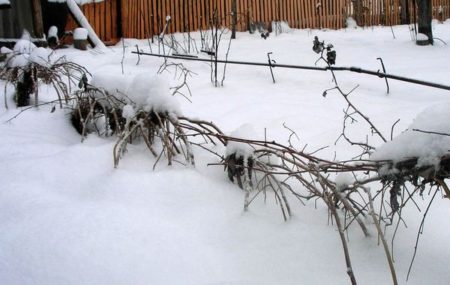

If raspberries grow in an open area and the snow does not linger on the bushes, arrange a special system for snow retention. For this, special barriers are installed on the windward side. A good option would be sheets of polycarbonate or plywood dug into the ground. In this case, the first option is preferable for durability, since polycarbonate does not rot and does not burst from frost.
If there is a need to fix the snow-holding device, it is tied to the support. The structure is installed so that the wind does not hit the raspberries.Therefore, it is placed on the side of a constant wind in winter. To clarify the required location, you can use the wind rose of the region's hydrometeorological service.


You may be interested in:
How to transplant raspberries in a new place in the fall? Every summer we get vitamins from a variety of berries, fruits and vegetables, including from everyone's favorite berry - raspberries ... Read more ...
If there is not enough snow or it is blown out, even with a snow retention system, raspberries are additionally covered with a special material. To do this, use lutrasil or spunbond. In this case, the branches are bent to the soil and laid on top of several layers of non-woven material. In areas with severe and little snowy winters, an arcuate cellular polycarbonate is additionally laid on top.
When to cover, at what temperature
Raspberry roots easily tolerate frosts down to -16 degrees, its shoots are even more frost-resistant, so you can take your time with the shelter of the berry. It is necessary to wait for the appearance of night frosts and only then cover the raspberries. The timing of warming procedures falls at different times in each specific region. You can move the event in one direction or another, depending on the weather.
In the suburbs, the middle lane
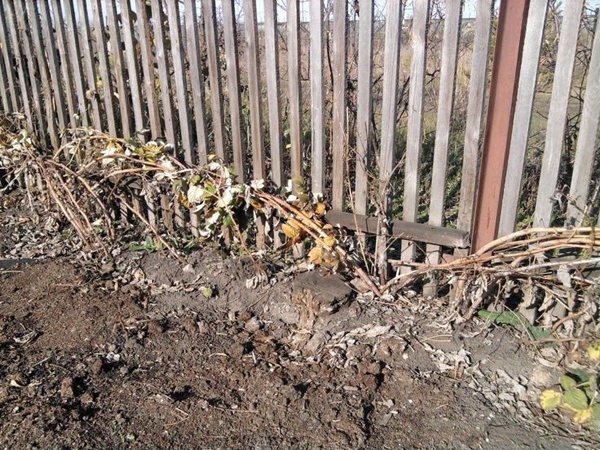

Raspberry bushes should not be covered too early for the winter, as in this case they are prone to damping. When frost appears, the branches become hard and fragile, bending them in the ground for shelter is problematic in this case - you can easily damage the shoots. Therefore, experts recommend choosing a moment when leaves have already flown from the bush, but the first snow has not yet fallen.
Flexible twigs are tied into a bundle and tilted closer to the ground surface. After that, they will be covered with snow, in a winter with little snow, you can use non-woven material. If the weather meets climatic standards, it will be necessary to start covering activities in early November.
In the Urals
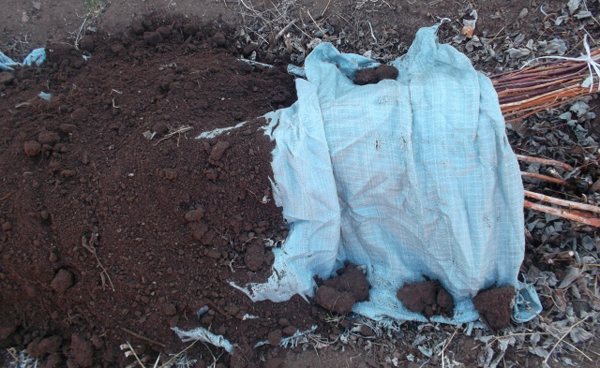

The climate of the Urals is harsh, therefore, it involves the creation of additional insulation for plants wintering in the open field. Raspberries are no exception. In addition to severe frost in this region, there are hurricane winds, the number of which increases every year. The snow cover can simply be swept away from the plants. Raspberries are tied to the lower tier of the trellis, if it is grown in a bush method, a rope is pulled 30 cm above ground level and the shoots are tied to it.
The contact of the branches with the soil is undesirable. After that, the bush is covered with several layers of high density lutrasil or spunbond. In the northern regions of the Urals, at least 3 layers of cover are used for shelter. If the site is blown out, the construction of windproof structures will not be superfluous. It is recommended to warm raspberries for winter here in the second decade of October.
In Siberia
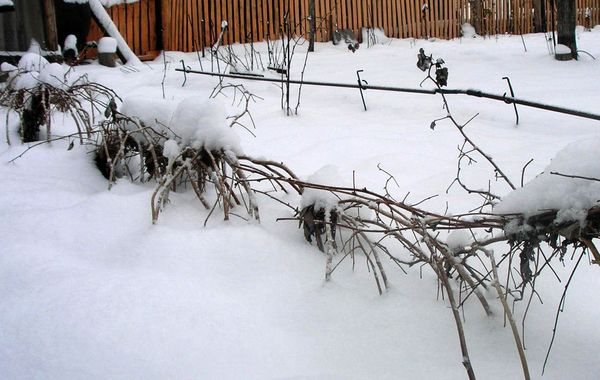

Suitable for growing in Siberia are such frost-resistant varieties as Carnival, Balsam, Skokinskaya, High, Muskoka and others. They calmly tolerate temperatures up to -37 degrees during wintering. The correct preparation of raspberries in the autumn period affects winter hardiness. The presence of a moderate amount of moisture and nutrients in the soil is important for the culture. The increased doses of potassium introduced in the fall are especially conducive to good wintering.
The advantage of Siberian winters is the large amount of snowfall. To prevent the tops of the shoots from freezing, the raspberries should be bent in advance, on the eve of the first snow. This must be done in early October. With a snow cover thickness of 40-50 cm, wintering will be quite successful. Plants can be pre-covered with non-woven material in 1-2 layers.
In the Leningrad region
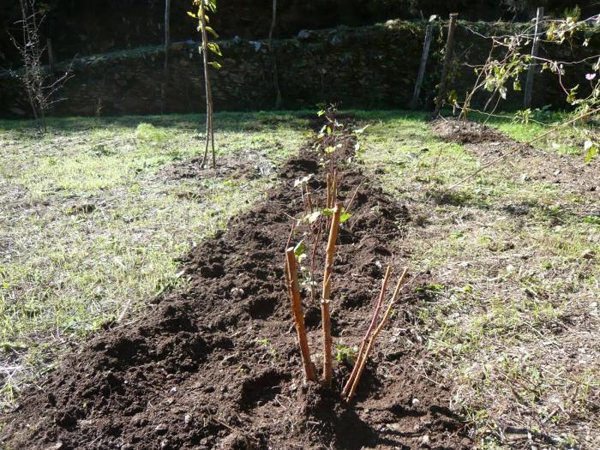

The climate of the northwest region is favorable for the cultivation of raspberries. Warm snowy winters are suitable for her, during which the bush does not need to be covered. There is no need to bend the branches here.It is enough to mulch the roots with a mixture of soil and peat, and later with snow.
For planting in the Leningrad region, remontant varieties are excellent, giving berries on one- and two-year shoots. Hilling of raspberries here takes place in mid-October, and when the snow cover falls, the bush is additionally covered with snow to a height of 40 cm.
Transbaikalia
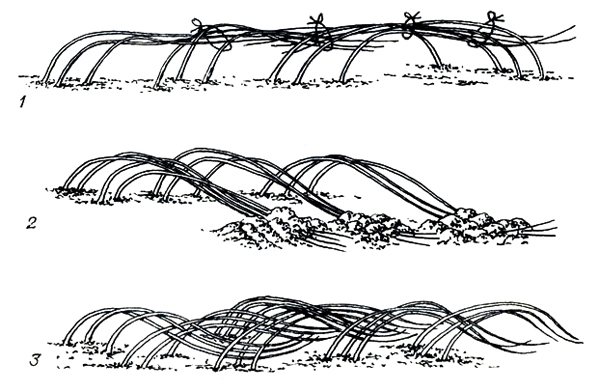

Growing raspberries in Transbaikalia requires more effort from gardeners than in other regions. In winter, it is important to keep the replacement shoots of the current season on the bushes, on which fruiting will occur. Due to low temperatures and a small amount of snow, it becomes necessary to bend the branches to the ground and sprinkle them with a layer of soil.

